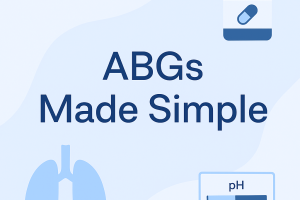Safe and Effective Care Environment: Safety and Emergency Response

Ensuring patient safety and responding appropriately to emergencies are key aspects of nursing practice. The NCLEX exam places a strong emphasis on these skills under the category of “Safe and Effective Care Environment.” This section covers crucial concepts like infection control, risk management, and emergency response protocols that nurses must master to provide quality care.
Key Concepts of Safety and Emergency Response
1. Patient Safety
Patient safety is the foundation of healthcare. Nurses must identify potential hazards, follow protocols to minimize risks, and create an environment that protects both patients and healthcare workers.
- Falls Prevention: Conduct fall risk assessments for patients, especially the elderly or those on medications affecting balance. Use bed alarms, assistive devices, and place commonly used items within easy reach.
- Medication Safety: Follow the “five rights” of medication administration: right patient, right drug, right dose, right route, and right time. Double-check high-alert medications like insulin and anticoagulants.
- Infection Control: Implement standard precautions, including hand hygiene, proper use of PPE, and safe disposal of sharps to prevent healthcare-associated infections.
2. Emergency Response
In emergencies, nurses must act quickly to assess the situation, ensure patient safety, and initiate appropriate interventions.
- Basic Life Support (BLS): Know the steps for performing CPR and using an Automated External Defibrillator (AED). Prioritize airway, breathing, and circulation (ABCs).
- Code Situations: Familiarize yourself with code protocols (e.g., Code Blue for cardiac arrest). Respond promptly, calling for help and initiating life-saving interventions.
- Fire Safety (RACE and PASS): In case of fire, remember RACE:
- R: Rescue anyone in immediate danger.
- A: Activate the fire alarm.
- C: Contain the fire by closing doors.
- E: Extinguish the fire if safe. For using a fire extinguisher, remember PASS:
- P: Pull the pin.
- A: Aim at the base of the fire.
- S: Squeeze the handle.
- S: Sweep from side to side.
- Disaster Preparedness: Understand hospital protocols for handling natural disasters, mass casualties, or pandemics. Be ready to triage patients using principles of disaster management.
NCLEX-Style Questions for Safety and Emergency Response
1. Falls Prevention
Question:
A nurse is caring for an 85-year-old patient at risk for falls. Which intervention should the nurse implement to prevent a fall?
A. Keep all four bed rails up
B. Place the call light within reach
C. Keep the patient’s room lights off at night to promote sleep
D. Remove the patient’s non-skid socks
Answer:
B. Placing the call light within reach ensures the patient can easily call for assistance when needed, reducing the risk of falls.
2. CPR and AED
Question:
A nurse finds a patient unresponsive and not breathing. After calling for help, what is the next step?
A. Check the patient’s pulse
B. Begin chest compressions
C. Place an AED on the patient
D. Give rescue breaths
Answer:
B. Begin chest compressions immediately to maintain circulation until an AED arrives or help comes. Checking for a pulse takes valuable time and may delay life-saving compressions.
3. Fire Safety
Question:
A fire breaks out in the patient’s room. Which action should the nurse take first?
A. Activate the fire alarm
B. Contain the fire by closing the door
C. Rescue the patient from the room
D. Extinguish the fire
Answer:
C. Rescue the patient first to ensure their safety, then follow the RACE protocol.
Tips for NCLEX Preparation
- Master emergency protocols: Know the steps for handling codes, BLS, and using an AED.
- Learn safety standards: Be familiar with fall prevention, infection control, and medication safety protocols.
- Practice NCLEX questions: Focus on scenarios that test your ability to prioritize patient safety and respond to emergencies.
Conclusion
Safety and emergency response are vital components of nursing practice, directly impacting patient outcomes. Understanding these concepts helps nurses provide a secure environment for patients and handle emergencies efficiently. For NCLEX success, focus on mastering the principles of patient safety, infection control, and emergency protocols to ensure you’re prepared for any situation.






